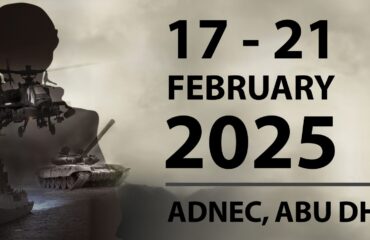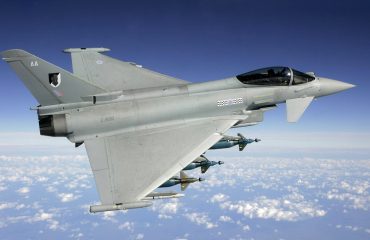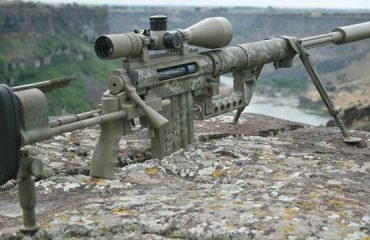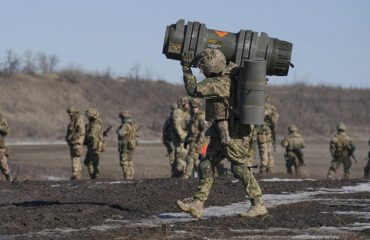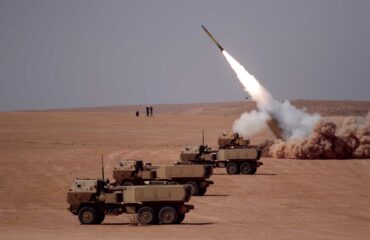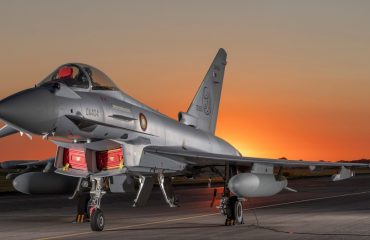French Navy FREMM Frigates “Hook” US Navy ASW Award
This is the third time (and the second year in a row) that the U.S. 6th Fleet awards the price to French units for their ability to find and track submarines.

The French Navy (Marine Nationale) FREMM Frigates FS Provence and FS Languedoc won the U.S. Navy’s “Hook’em” award. This is the third time (and the second year in a row) that the U.S. 6th Fleet awards the price to French units for their ability to find and track submarines.
In addition to the two frigates, the command staff of the French carrier strike group (CTF 473) was also presented with the award this year.
“Hook’em Award”

The “Hook’em Award” rewards Anti-Submarine Warfare (ASW) excellence. It is presented quarterly to a unit supporting U.S. Navy’s 6th Fleet (also known as US Naval Forces Europe) which has demonstrated superior ASW readiness, proficiency, and operational impact.
Vice Adm. Frederick C. Turner established the “Hook ‘Em” award in December 1975 to recognize 6th Fleet’s ships, submarines, and aircraft squadrons demonstrating ASW excellence. The award was discontinued two decades later, but it was reestablished by Adm. James G. Foggo III in 2016 during his tenure as Commander, US 6th Fleet.

FREMM Provence sailing alongside Virginia-class submarine USS Hawai in the Indian Ocean in 2019. ©Marine Nationale/Défense
In 2021, Admiral Eugene Black, Commander of the U.S. 6th Fleet based in Naples, has rewarded three French units: CTF 473, FS Provence and FS Languedoc.
The two Aquitaine-class FREMM frigates, operating under the tactical command of CTF 473 have demonstrated their excellence in ASW, as observed by the U.S. Navy during joint maneuvers in the Mediterranean Sea in recent months.
Last year, French CTF 470 and 473 and French frigates FS Bretagne (D-655) and FS Auvergne (D-654) earned the recognition. Back in 1991, the 21F flotilla, stationed at Nîmes-Garons naval air base and flying Atlantique Maritime Patrol Aircraft won the award.
About Aquitaine-class FREMM Frigates
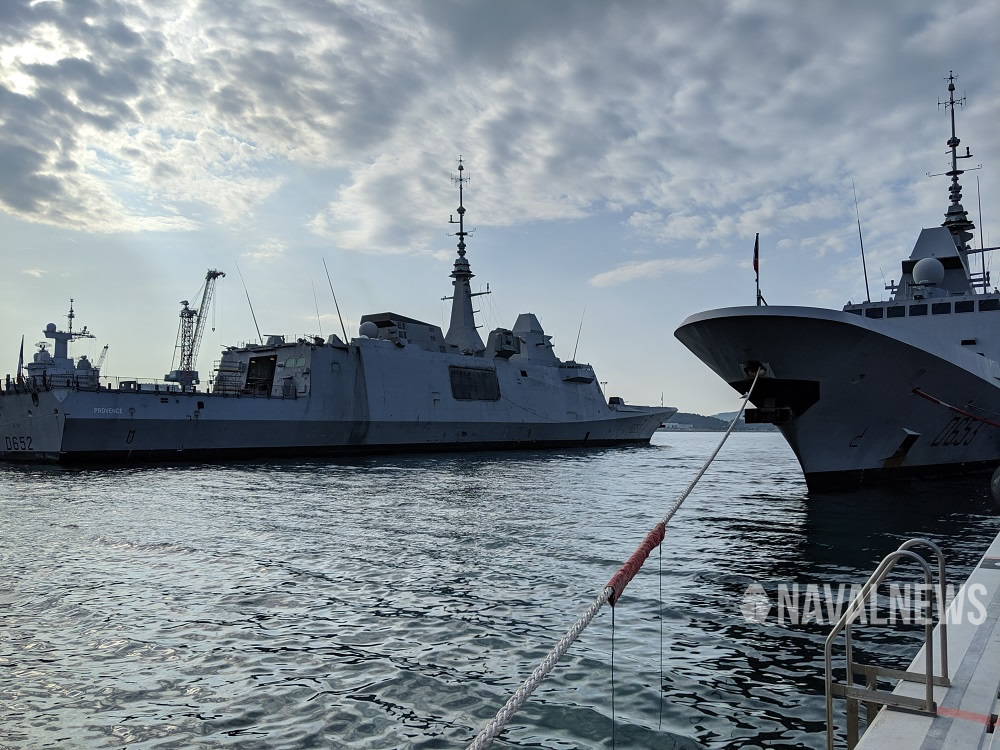
FREMM Provence and FREMM Languedoc berthed at Toulon naval base. Naval News picture.
According to the French Armament General Directorate (DGA), FREMM, designed and developed by Naval Group, is a stealth, versatile and enduring surface combatant with advanced automation. Its main missions are the control of a zone of maritime operation, anti surface (ASuW) and anti submarine (ASW) warfare, precision deep strike with naval cruise missile (it is the only class of NATO vessel in Europe with the capability to launch land attack cruise missiles from surface vessels), the deployment and support of special forces…

French Navy NH90 NFH helicopter deploying a FLASH sonar. French Navy picture.
The FREMM can deploy the Caiman Marine (NH90 NFH) maritime helicopter, with unmatched ASW capabilities thanks to its FLASH dipping sonar and MU90 torpedoes. The FREMM-Caiman combo represents a cability gap in terms of ASW. The FREMM is also equipped with the Zodiac Milpro Ecume, the new tactical boat for naval special forces.
In 2030, the French Navy will have fifteen first-line frigates including 8 FREMM, 2 air defense destroyers (Horizon-class) and 5 new generation FDI (Defense and Intervention Frigates). There are 6 FREMM in ASW configuration: Aquitaine, Provence, Languedoc, Auvergne, Bretagne and Normandie. Alsace and Lorraine, the last two FREMMs, feature enhanced air defense capabilities and are known as FREMM DA.
FREMM frigates main specifications
Heavily armed, the Normandie FREMM deploys the most effective equipment and weapon systems, integrating the SETIS software as well as the Herakles multi-function radar and CAPTAS-4 variable depth sonar, the naval cruise missile (NCM), the Aster and Exocet MM40 missiles and MU 90 torpedoes.
- Overall length: 142 metres
- Width: 20 metres
- Displacement: 6,000 tonnes
- Max. speed: 27 knots
- Implementation: 123 persons (among whom 14 dedicated to the helicopter detachment)
- Endurance: 45 days
About CAPTAS-4 VDS

CAPTAS 4 VDS aboard FREMM Provence. ©Yoann Letourneau/Marine Nationale/Défense
Designed and produced by Thales, the CAPTAS-4 (for Combined Active and Passive Towed Array Sonar, also known as S2087) equips first rank ASW frigates such as the Royal Navy Type 23 and Type 26 frigates, the French Navy FREMM and FDI frigates, the Italian FREMMs, the Spanish F110 frigates, and the Chilean T-23…
CAPTAS-4 brings unrivalled performance against quiet submarines to achieve any ASW missions including escort, area sanitization and own force protection. It enables surface vessels to hunt submarines at considerable distances and detect them beyond the range from which they can launch an attack.
The case for the U.S. Navy to look closely at the CAPTAS-4 ?
The Royal Navy and Marine Nationale both operate the Thales FLASH dipping sonar from their helicopters and the CAPTAS-4. ASW experts from both navies have described the combination of the two sonars as ‘world beating’. The U.S. Navy is an existing user of the FLASH dipping sonar (known locally as the ALFS). The CAPTAS-4 was initially selected by the U.S. Navy to meet the ASW escort mission requirement for the Littoral Combat Ship (LCS). But in the end, a new variable depth sonar design by Raytheon and GeoSpectrum was selected. The design is said to have faced issues during its integration with the LCS. With this in mind, and yet another “Hook’em award” for two CAPTAS-4 equiped-ship, maybe the US Navy will consider the Thales VDS for its own FREMM: the Constellation-class / FFG(X) ?
